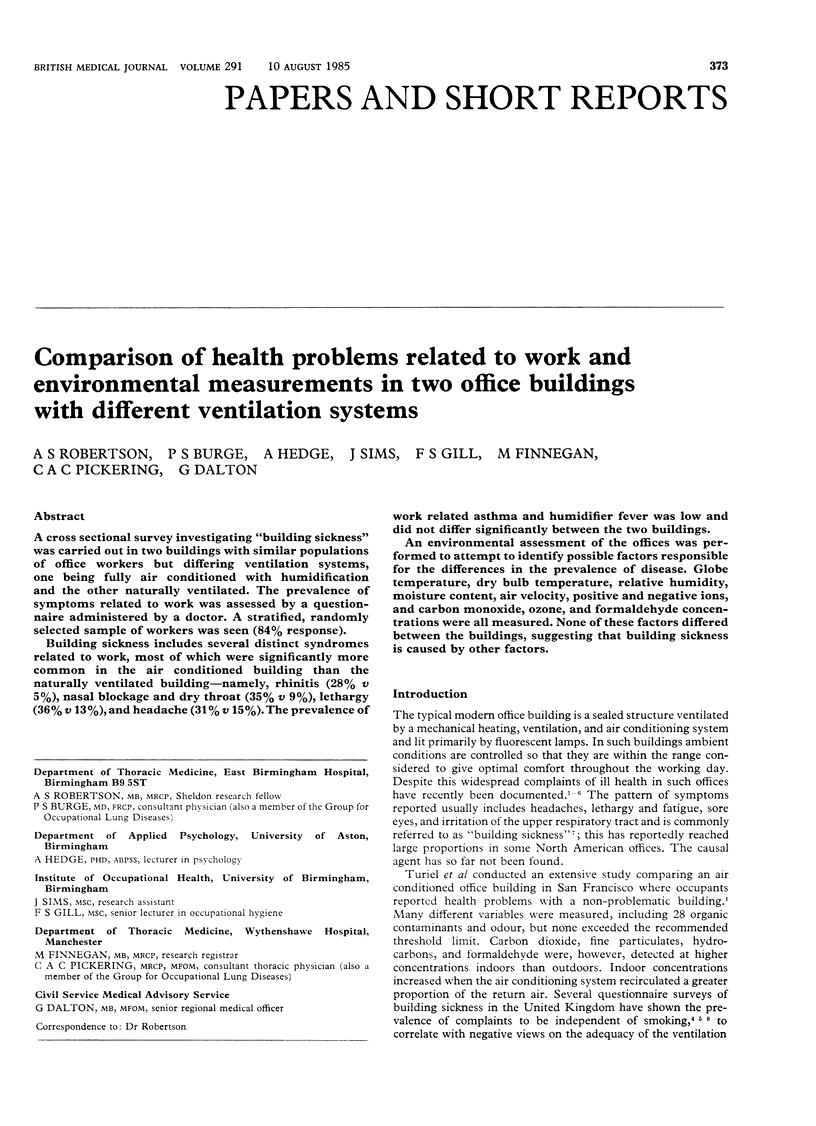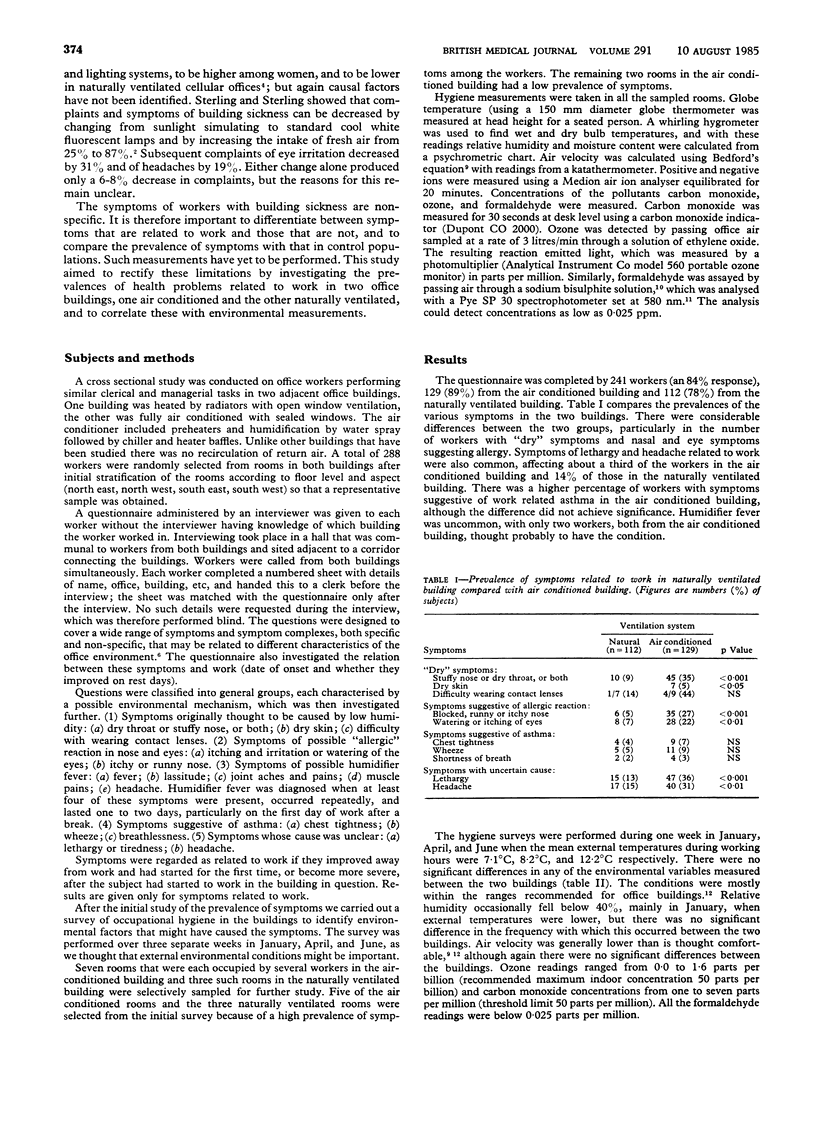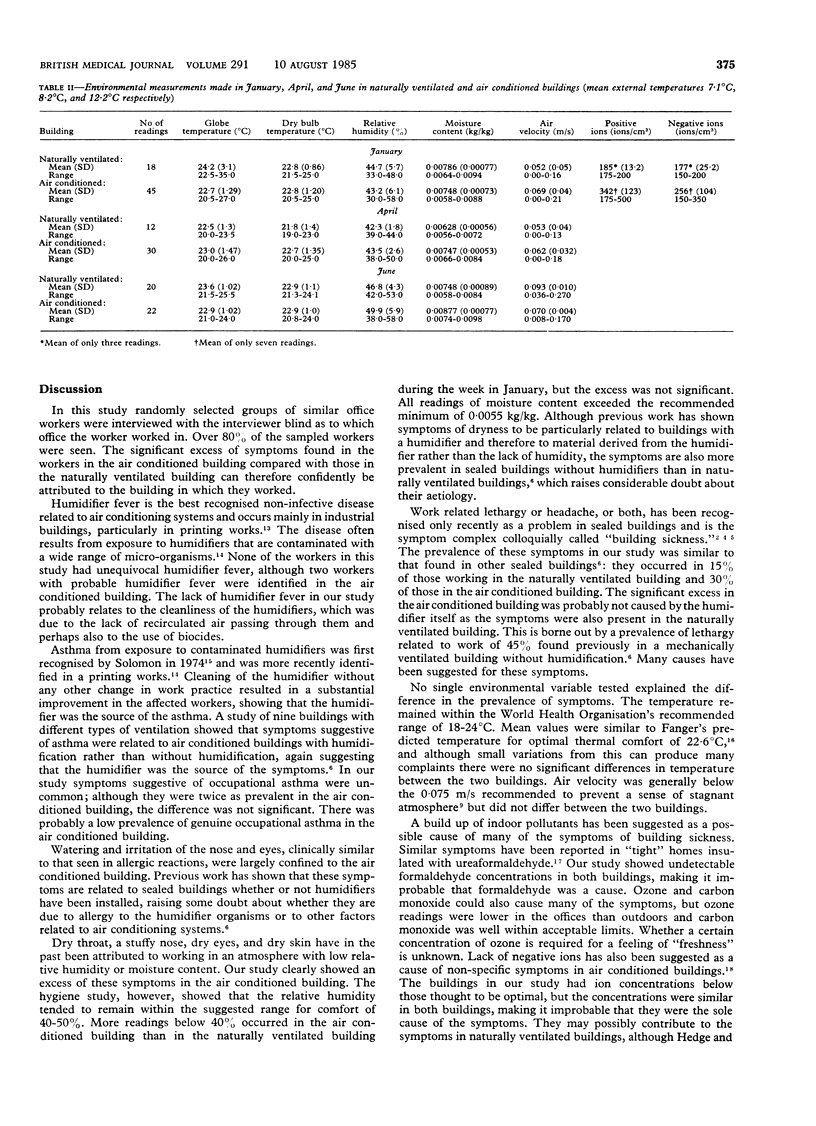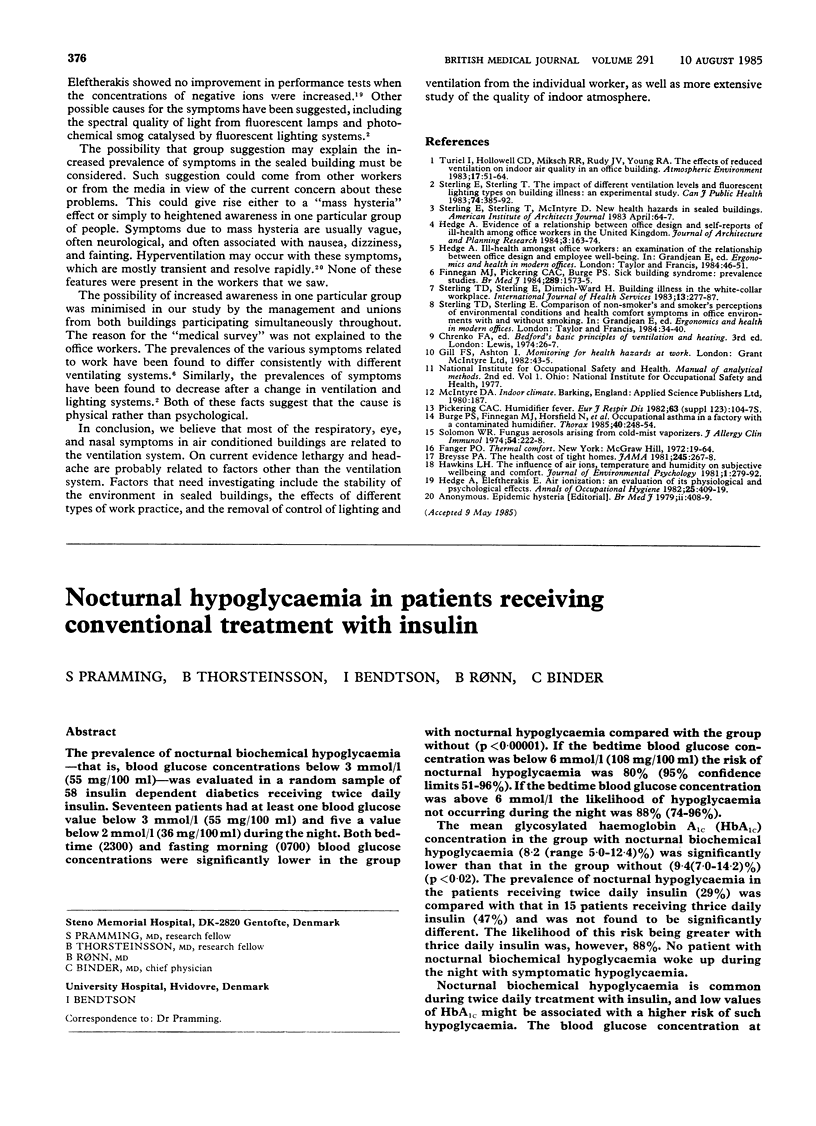Abstract
A cross sectional survey investigating "building sickness" was carried out in two buildings with similar populations of office workers but differing ventilation systems, one being fully air conditioned with humidification and the other naturally ventilated. The prevalence of symptoms related to work was assessed by a questionnaire administered by a doctor. A stratified, randomly selected sample of workers was seen (84% response). Building sickness includes several distinct syndromes related to work, most of which were significantly more common in the air conditioned building than the naturally ventilated building--namely, rhinitis (28% v 5%), nasal blockage and dry throat (35% v 9%), lethargy (36% v 13%), and headache (31% v 15%). The prevalence of work related asthma and humidifier fever was low and did not differ significantly between the two buildings. An environmental assessment of the offices was performed to attempt to identify possible factors responsible for the differences in the prevalence of disease. Globe temperature, dry bulb temperature, relative humidity, moisture content, air velocity, positive and negative ions, and carbon monoxide, ozone, and formaldehyde concentrations were all measured. None of these factors differed between the buildings, suggesting that building sickness is caused by other factors.
Full text
PDF



Selected References
These references are in PubMed. This may not be the complete list of references from this article.
- Breysse P. A. The health cost of 'tight' homes. JAMA. 1981 Jan 16;245(3):267–268. [PubMed] [Google Scholar]
- Burge P. S., Finnegan M., Horsfield N., Emery D., Austwick P., Davies P. S., Pickering C. A. Occupational asthma in a factory with a contaminated humidifier. Thorax. 1985 Apr;40(4):248–254. doi: 10.1136/thx.40.4.248. [DOI] [PMC free article] [PubMed] [Google Scholar]
- Finnegan M. J., Pickering C. A., Burge P. S. The sick building syndrome: prevalence studies. Br Med J (Clin Res Ed) 1984 Dec 8;289(6458):1573–1575. doi: 10.1136/bmj.289.6458.1573. [DOI] [PMC free article] [PubMed] [Google Scholar]
- Hedge A., Eleftherakis E. Air ionization: an evaluation of its physiological and psychological effects. Ann Occup Hyg. 1982;25(4):409–419. doi: 10.1093/annhyg/25.4.409. [DOI] [PubMed] [Google Scholar]
- Pickering C. A. Humidifier fever. Eur J Respir Dis Suppl. 1982;123:104–107. [PubMed] [Google Scholar]
- Solomon W. R. Fungus aerosols arising from cold-mist vaporizers. J Allergy Clin Immunol. 1974 Oct;54(4):222–228. doi: 10.1016/0091-6749(74)90064-5. [DOI] [PubMed] [Google Scholar]
- Sterling E., Sterling T. The impact of different ventilation levels and fluorescent lighting types on building illness: an experimental study. Can J Public Health. 1983 Nov-Dec;74(6):385–392. [PubMed] [Google Scholar]
- Sterling T. D., Sterling E., Dimich-Ward H. Building illness in the white-collar workplace. Int J Health Serv. 1983;13(2):277–287. doi: 10.2190/3MGF-W1L9-6CDQ-B298. [DOI] [PubMed] [Google Scholar]


